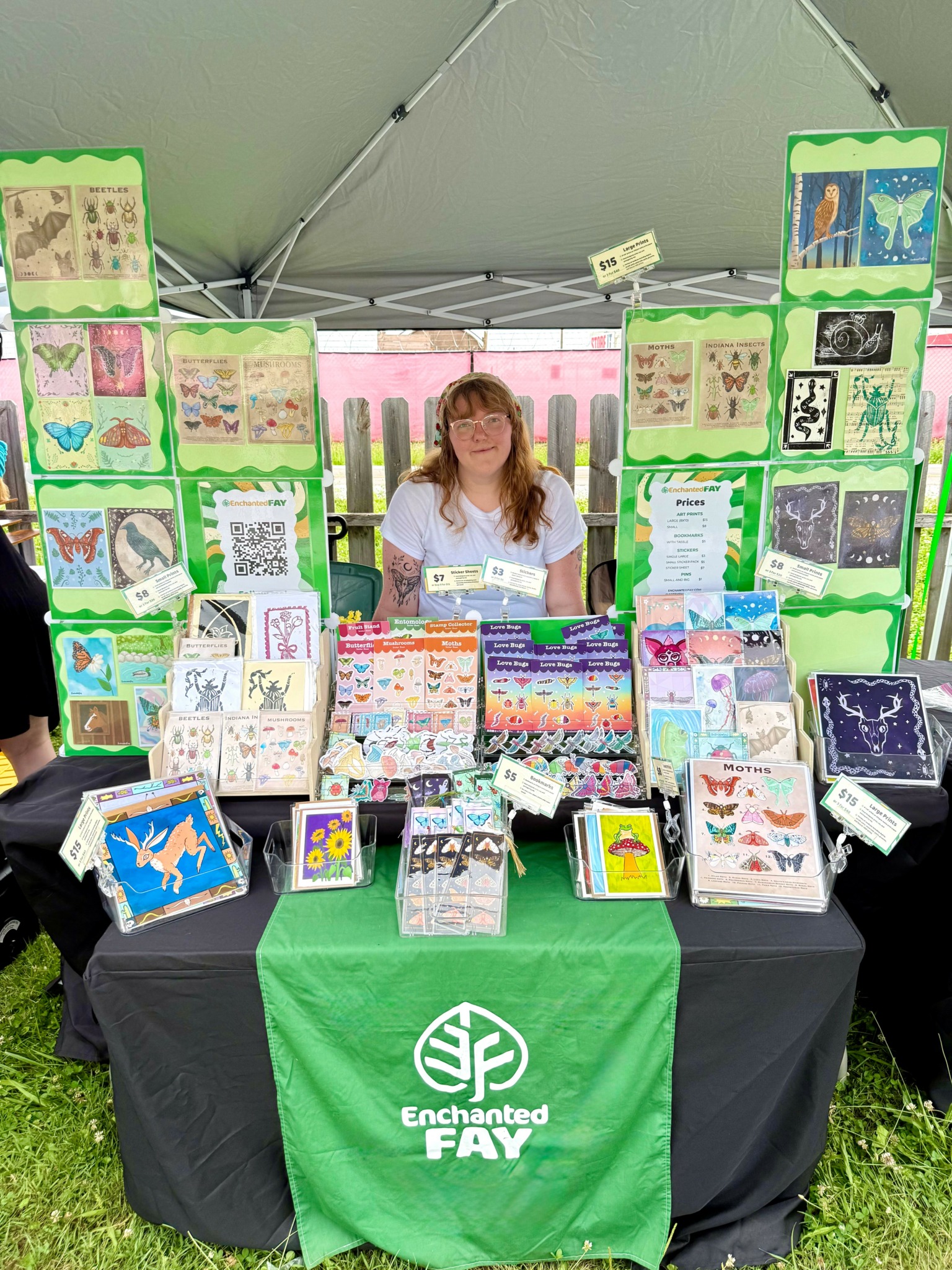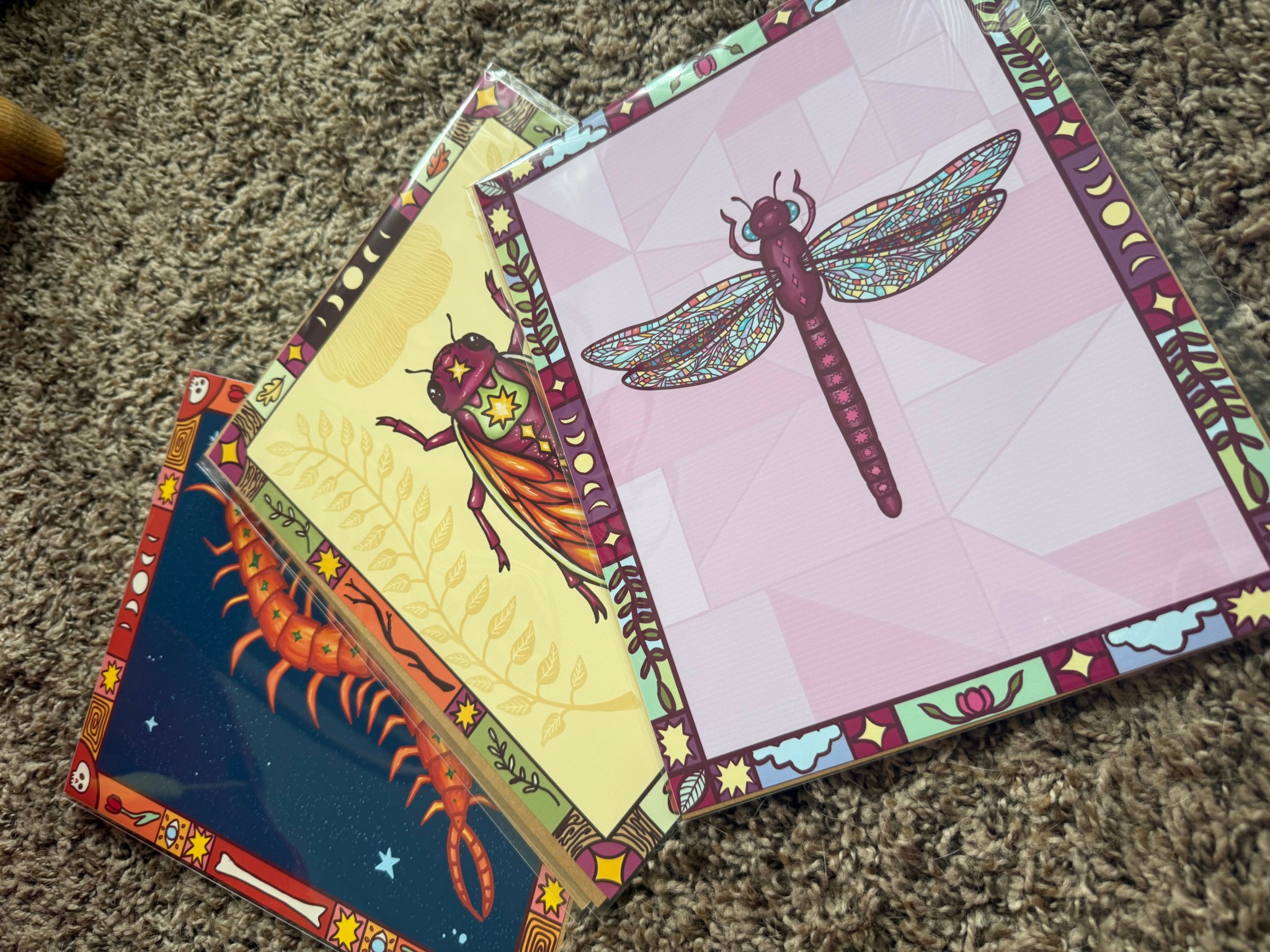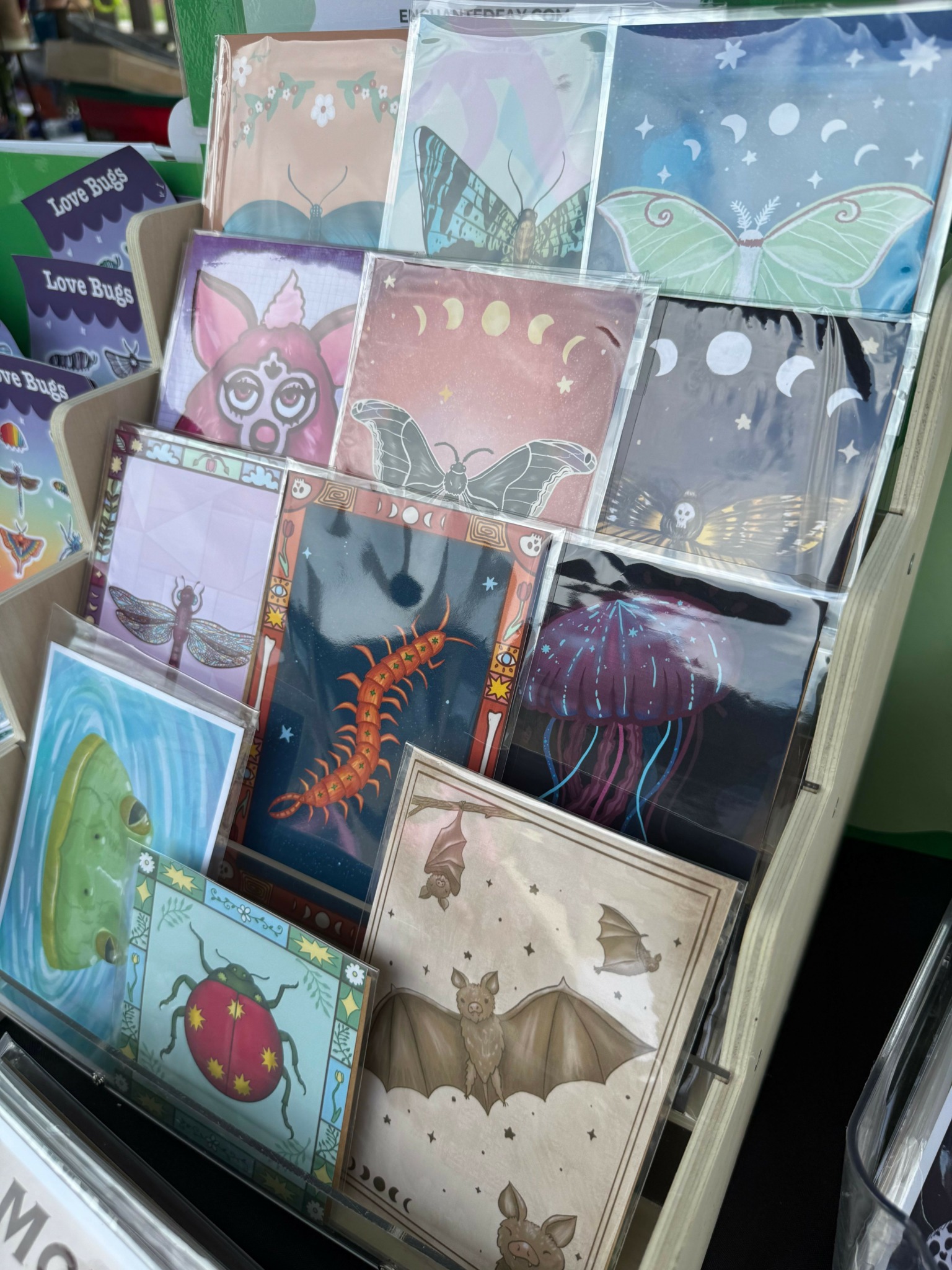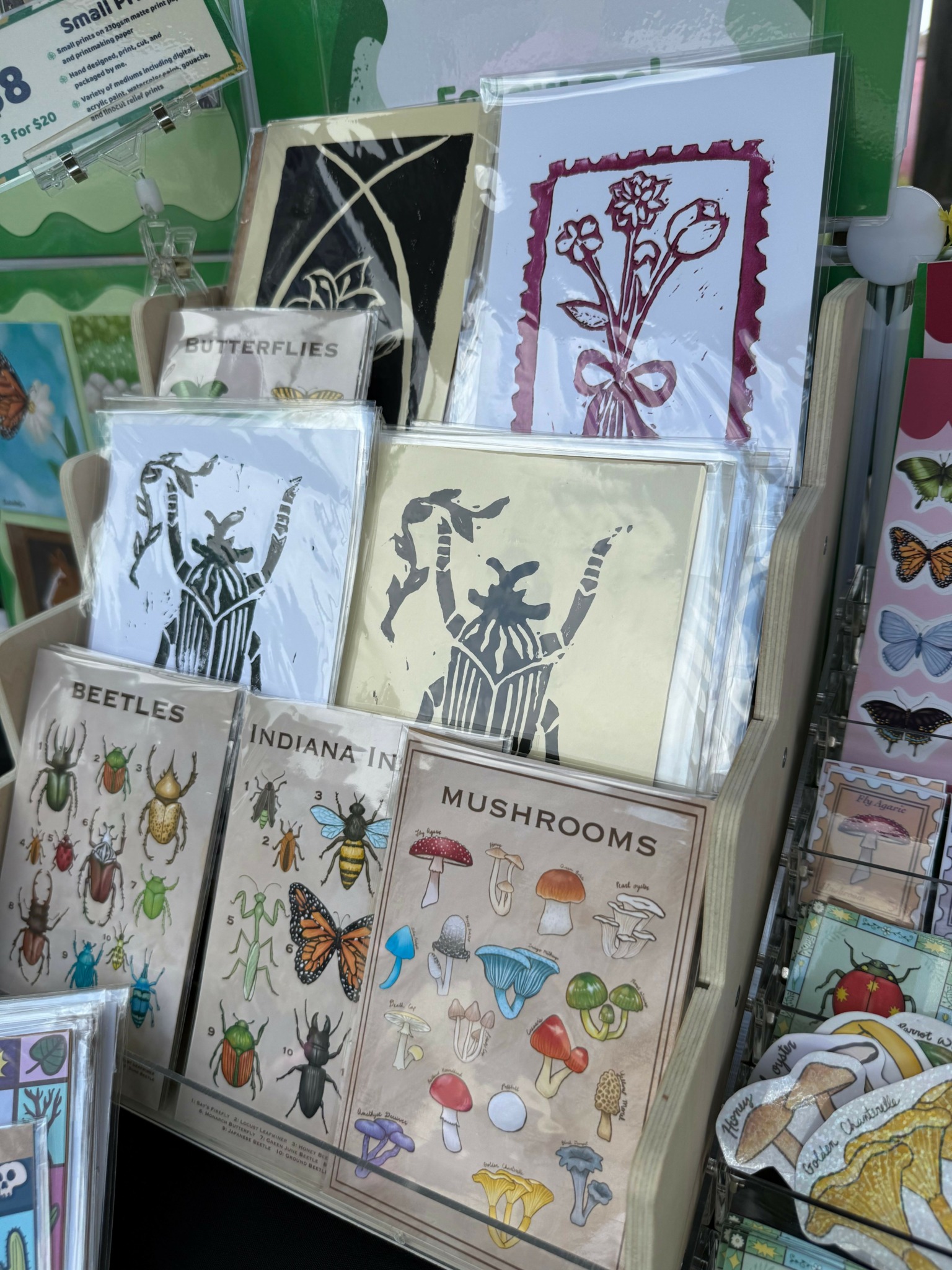We’re excited to introduce you to the always interesting and insightful Faith Wheat. We hope you’ll enjoy our conversation with Faith below.
Faith, appreciate you joining us today. It’s easy to look at a business or industry as an outsider and assume it’s super profitable – but we’ve seen over and over again in our conversation with folks that most industries have factors that make profitability a challenge. What’s biggest challenge to profitability in your industry?
As an artist, my profit grows from my ability to be creative. I’m constantly trying to sketch and learn different art techniques, so I can turn around and create new and better art prints, stickers, bookmarks and merch for my shop. Sometimes, I hit a creative block though. It might be that I just don’t want to do art, or it could be that I’m just not feeling inspired. Before I was a business owner, art block didn’t really affect me. If I didn’t want to create, I just didn’t. Now that I have a business that rides on my creativity, it’s a lot more scary having art block.
This year, from about January to March, I hit a hard art block wall. At first, I tried to force myself to create, create, create, but it just made me miserable. I was tired all the time, and my business paused. I stopped posting on social media, I stopped sketching, and I stopped creating. I felt like a failure, and I didn’t know what to do. That’s when I realized that my creative bucket was empty. I spent so much time creating, that I wasn’t giving myself the time or space to go out and experience and see art out in the world. I didn’t have any experiences to pull inspiration from. After this realization, I started going on walks at the park. I tried to prioritize hanging with friends and visiting new places. I watched more movies, and I got back into watching music videos. I researched some new mediums of art that I could try, and I started to create for me. I stopped worrying as much about what customers might want from me. I began designing the art I’d love to see on my wall.
Once I stopped making art for current trends and focused more on what things I want to create, my art improved and I’ve really developed my style. I’ve had a lot more people buy my art prints and compliment my art style since I’ve stopped working about what I think people want to see. Making sure my creative buckets are filled has also been crucial to getting past art block. If I’m not feeling creative, that’s my sign to go out into the world and experience it. It’s my sign to go try something new.
I’m thankful that I get to share my art with the world, but it comes with its trials. I’m constantly learning new things about being an artist and about myself. I wouldn’t change my journey for anything though.

Faith, love having you share your insights with us. Before we ask you more questions, maybe you can take a moment to introduce yourself to our readers who might have missed our earlier conversations?
Hello! I’m Faith, and I’m the artist behind Art by Enchanted Fay! I’m an Indianapolis based artist that specializes in digital art and acrylic paintings. I also dabble in watercolor, gouache, and linocut prints. I love creating nature themed pieces, especially insect and plant art.
My goal for Art by Enchanted Fay is to provide accessible art for people to make the world a more colorful, whimsical place! I sell art prints, bookmarks, stickers, and other merchandise at reasonable prices so that people can have access to high quality art!

We’d love to hear a story of resilience from your journey.
Starting a business is not for the faint of heart. There’s a lot of time, energy, and money that’s required to get the business started. I started my art business in 2024. I invested money into the canopy, tables, table cloths, display pieces, signage, and my product. I then applied for random markets near me. The week leading up to the markets, I would stay up past midnight prepping. I would package my prints, make signage, make lists on what I needed to bring, organize and pack my products. On market day, I would wake up super early, carry all the stuff out to my car, and head to the market. Exhausted from no sleep and from carrying everything, I would sit at my table and try to keep a smile on my face as people passed by my booth. At my first few markets, I earned a little over $100. It didn’t quite cover the amount of hours I spent working or the amount I spent on setup, but to me it was a start. I told myself, a lot of businesses don’t actually make money in the first year. I was motivated. I could see a future of selling my art at big markets, in an online store, and in a physical store. Then came my first market where I sold absolutely nothing. I was devastated.
After hours of preparing and printing and cutting and packaging, selling nothing came like a punch to the gut. I felt embarrassed. I felt like a failure. I felt tired. I asked myself, “What am I doing? What is wrong with me? Why did I think I could do this? What makes your art any better than anyone else’s? You wasted all this money, and for what?” The market left me feeling defeated. I had more shows coming up, but I no longer had the motivation to do them. My friends and my family in my life encouraged me and told me my art was good and that I just have to keep trying. They said that maybe that just wasn’t my audience, and they were right. I started my business trying to sell to anyone and everyone, but in reality my business should have an ideal customer. Art is subjective and not everyone is going to like my art. I learned that that is completely okay. It doesn’t diminish my worth as an artist. I just need to find my people who get it. I began looking for specific markets that fit my niche and would have my ideal customers at it, and it has made all the difference. I now attend big markets, have an online shop, and have my art in a physical store, and all because I didn’t give up.

Learning and unlearning are both critical parts of growth – can you share a story of a time when you had to unlearn a lesson?
A lesson I had to unlearn was jumping on every opportunity that came my way. In my first year of running my business, I would accept every opportunity I found or someone sent to me. As an artist, I sell my art at markets and art shows. I would find random craft shows and my family would send me some too. I applied for everything I laid my eyes on. I figured, selling at 20 shows must be better than applying to a few good shows. I did well at some shows and at others I sold nothing. Towards the end of the year, I was disheartened and questioned my art and my skills.
At the end of the year, I knew something had to change. I reflected, took an outside look at my business and realized I needed to build an ideal customer profile. Once I mapped that out, I realized that my ideal customer would not attend half the markets I did the year before. I began researching shows that my ideal customer would be at, and I applied for those. At these markets, I sold more art and gained more followers on my social media. I’m still learning and testing out different markets, but I’ve definitely found more consistent footing when it comes to applying for markets. Now I only have a market every once in a while that isn’t great, and usually that’s due to weather or outside factors. Saying no to opportunities that I believe won’t be beneficial to my business has also helped me allocate more time to other projects. Sometimes it’s hard to say no to opportunities, but at the end of the day it’s important to do what’s best for you and your business.
Contact Info:
- Website: https://EnchantedFay.com
- Instagram: https://www.Instagram.com/artbyenchantedfay
- Facebook: https://www.facebook.com/share/16urrE4xrb/?mibextid=wwXIfr
- Youtube: https://youtube.com/@enchantedxfay?si=-_DHwvTikH2d6RUW
- Other: https://Linktr.ee/enchantedfay






